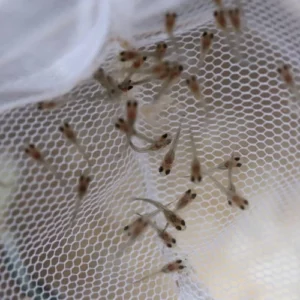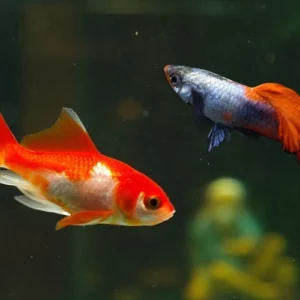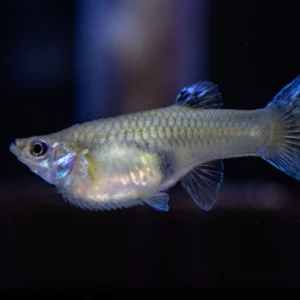Guppy Fish Water Temperature (Maximum and Minimum)
The minimum temperature for guppies is 72°F (23°C), whilst the maximum temperature is 82°F (28°C). There are exceptions to this rule, but in general this is what is best for guppies.
Home » Guides » Fish Care » Guppy » Guppy Fish Water Temperature (Maximum and Minimum)
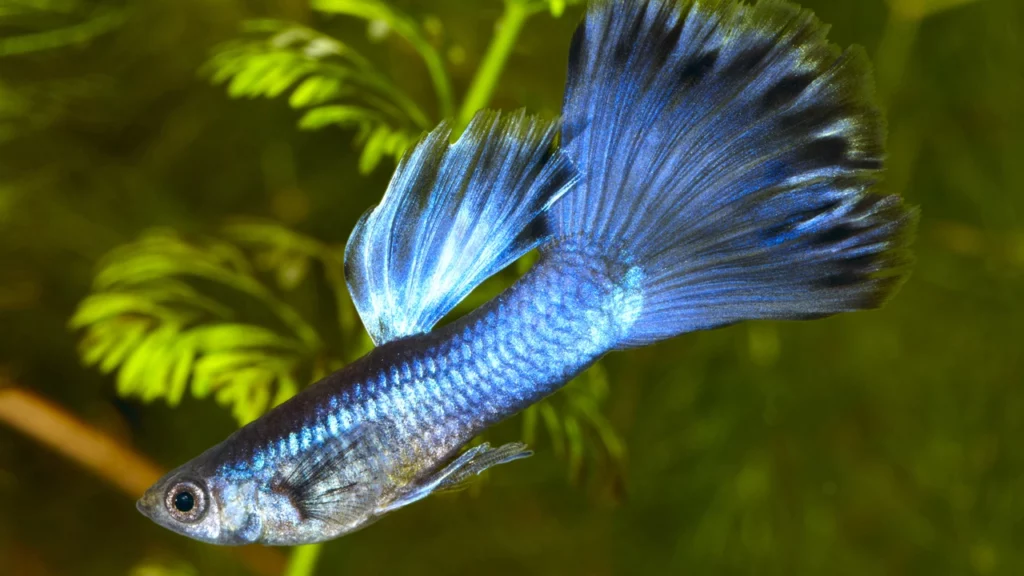
Guppy Care Fact Sheet
| Scientific Name | Poecilia Reticulata |
| Common Name | Guppy, Million Fish |
| Care Difficulty | Easy |
| Life Expectancy | 2+ Years |
| Minimum Temperature | 72°F (23°C) |
| Maximum Temperature | 82°F (28°C) |
Maximum and Minimum Temperature Tolerances
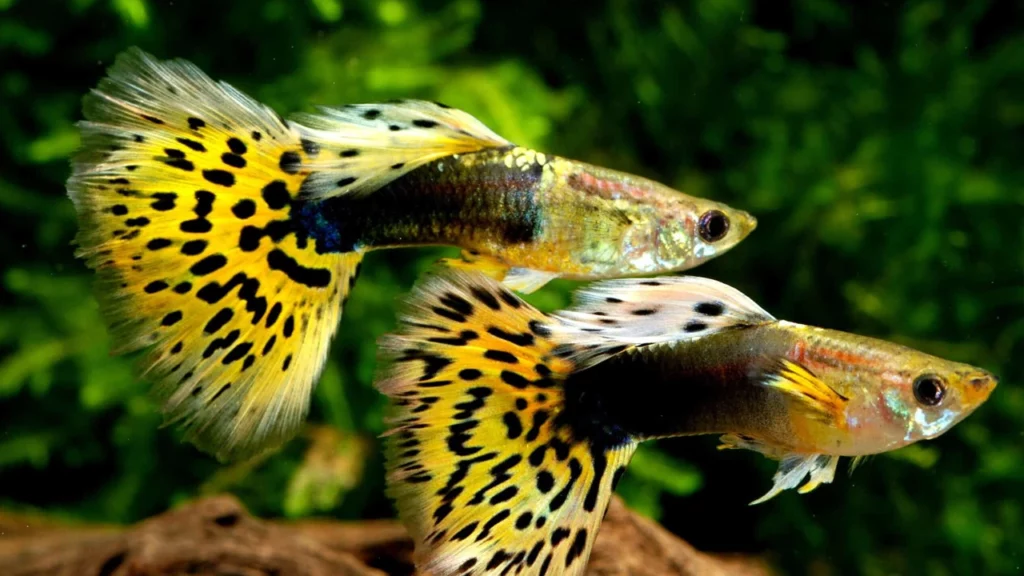
The Highest Safe Temperature
Heat can be both a boon and a bane. While the warmer side of the spectrum can stimulate guppy metabolism and breeding, there’s a limit to how much warmth they can endure.
Risks and signs of heat stress:
- The Upper Limit: While guppies can tolerate temperatures up to 82°F (28°C), pushing beyond this can be risky. Prolonged exposure to temperatures above 84°F (29°C) can cause serious stress and even be fatal if sustained.
- Accelerated Metabolism: Warmer waters boost a guppy’s metabolism. It sounds beneficial, but remember, a constantly revved engine can wear out faster. A consistently high metabolic rate can shorten a guppy’s lifespan.
- Oxygen Deprivation: Warmer waters hold less dissolved oxygen than cooler waters. Guppies might find themselves gasping at the surface, trying to gulp in air when the water is too warm.
- Signs of Stress: Watch out for guppies that seem lethargic or are swimming erratically. If they’re hanging out at the water’s surface more than usual or are trying to nestle near cooler spots in the tank (like near the substrate), they might be signaling that the heat is getting to them.
- Heightened Disease Risk: As mentioned earlier, higher temperatures can create breeding grounds for harmful bacteria and parasites. Couple this with a potentially stressed and weakened guppy, and you’ve got a recipe for health issues.
The Lowest Safe Temperature
While the tropical origins of the guppy might make one assume they are forever sun-chasers, these little champs have some resilience to the cold. However, there are limits to their chill tolerance.
Impacts of colder temperatures and identifying hypothermia:
- The Chilly Frontier: Guppies can, in certain circumstances, tolerate temperatures dipping down to 68°F (20°C). However, such lows are not ideal for prolonged periods. Regular exposure to these temperatures can slow down their metabolism, making them sluggish and less responsive.
- Signs of Cold Stress: A cold-stressed guppy might appear lethargic and might even have difficulty maintaining buoyancy. Their feeding patterns might change, becoming less eager to eat or not eating at all.
- Immune System Impacts: As with heat stress, cold stress can also compromise a guppy’s immune system. A weakened guppy in cold waters is more susceptible to diseases and infections.
- Breeding Challenges: Breeding behaviors are reduced in colder waters. Not just that, if by some chance breeding does occur, the development of the fry can be slowed, leading to weaker offspring.
- Behavioral Changes: You might notice guppies huddling together in groups, trying to share warmth, or seeking warmer microhabitats within the aquarium, like near a heater or a warmer water stream.
Understanding the Importance of Water Temperature for Guppy Fish
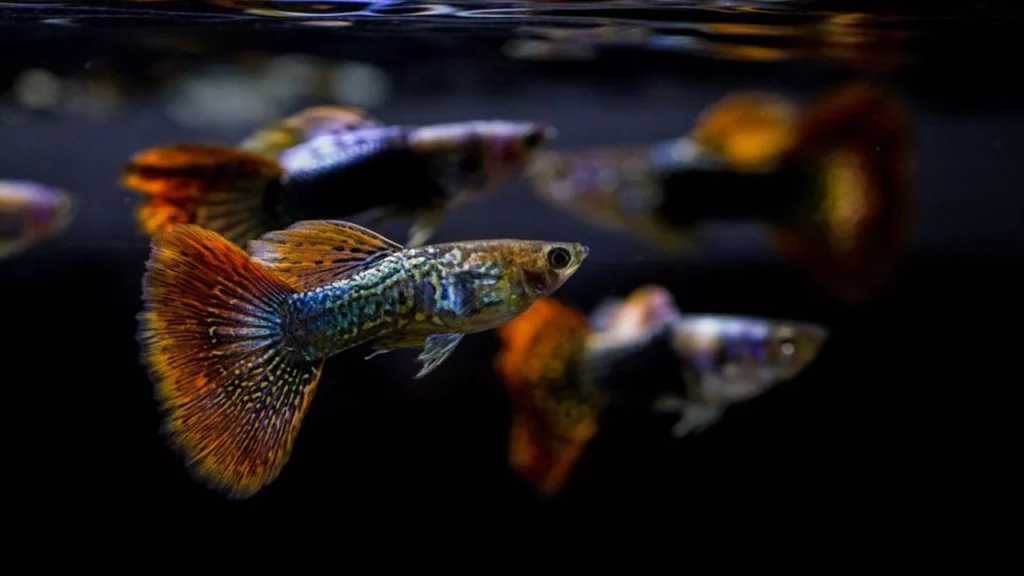
Metabolic Impacts
The life of a guppy fish, like many other aquatic beings, is closely intertwined with its environment. Now, imagine trying to run a marathon with a heavy sweater on in the heat of summer. You’d probably feel sluggish and worn out, wouldn’t you? Similarly, the temperature of their aquatic realm has a direct impact on the guppy’s metabolism.
The relationship between temperature and guppy metabolism:
Water temperature acts like a thermostat for the guppy’s internal metabolic machinery. At the very core, metabolism refers to the chemical reactions occurring in the guppy’s body, which is the main driving force behind its energy, growth, and overall well-being.
- Optimal Temperatures: When guppies find themselves in the Goldilocks zone of water temperatures (not too hot, not too cold), their metabolic processes are at their peak efficiency. This means they’re active, they feed well, and they grow as one would expect.
- Too Cold: If the water gets too chilly, guppies’ metabolic rates drop. They become less active, eat less, and might even go into a form of metabolic ‘slow-down’. This isn’t a full-blown hibernation, mind you, but it’s a way for them to conserve energy in less-than-ideal conditions.
- Too Hot: Conversely, if the water becomes too warm, guppies’ metabolic rates can spike, leading to them burning energy faster than they can consume it. This sounds useful in theory, like having an internal furnace, but it’s detrimental. An overactive metabolism means they need more food, more oxygen, and, unfortunately, it can even shorten their life spans.
Breeding Implications
Ah, the circle of life! It’s mesmerizing, intricate, and for our little guppy friends, deeply influenced by their watery abode’s temperature.
How temperature influences breeding and fry development:
- Optimal Breeding Temperatures: Most guppies tend to breed best when the water temperature is somewhere between 74°F and 82°F (23°C – 28°C). Within this temperature range, guppies not only mate more frequently but the chances of a successful brood increase as well.
- Egg Development & Fry: Once our guppy mama is expecting, the water temperature plays a pivotal role in the development of her fry. Warmer temperatures can speed up the gestation period, leading to a quicker birth. However, there’s a catch. While warmer waters might give you baby guppies faster, it could also mean that the fry are born smaller and potentially weaker.
- Too Cold: If the water is cooler than the ideal range, guppies might be reluctant to breed at all. Their bodies instinctively understand that cooler waters might not be the best for their offsprings’ survival. If they do reproduce, the gestation period is extended, meaning it takes longer for the fry to be born.
- Gender Ratios: Here’s a fascinating tidbit: some studies suggest that water temperature might even influence the gender ratio of the fry. Warmer waters might produce more males, while cooler waters might sway towards females. Nature always has its mysterious ways, doesn’t it?
Disease Resistance
The waters guppies swim in are not just filled with wonders, but also potential threats. One might not often consider it, but temperature plays a significant role in how guppies resist and recover from illnesses.
The interplay between water temperature and disease vulnerability:
- Optimal Temperatures for Health: Just as there’s an optimal range for breeding, there’s a range where guppies can best fend off diseases, usually around 74°F to 78°F (23°C – 26°C). Here, their immune systems are vigilant and functioning at peak capacity.
- Too Cold: Colder waters can slow down a guppy’s immune response. Picture it like this: in cold temperatures, their internal defense mechanisms are trying to function while wrapped in thick winter coats – it’s a bit harder to get things done efficiently! This sluggish response can make guppies more susceptible to infections, parasites, and other aquatic ailments.
- Too Hot: On the flip side, warmer waters can speed up the growth of harmful bacteria and pathogens. While guppies might have an accelerated metabolism in warmer waters, it doesn’t necessarily mean their immune systems can keep up with the increased threats. It’s like them running on a treadmill that’s going just a bit too fast – they’re more prone to trip and fall (or in this case, fall ill).
- Stress Factor: Water temperature fluctuations, whether sudden or frequent, can stress guppies. And just like humans, stressed fish are more susceptible to illnesses. Keeping a consistent temperature is akin to providing them a safe, predictable haven.
Optimal Temperature Range for Guppies
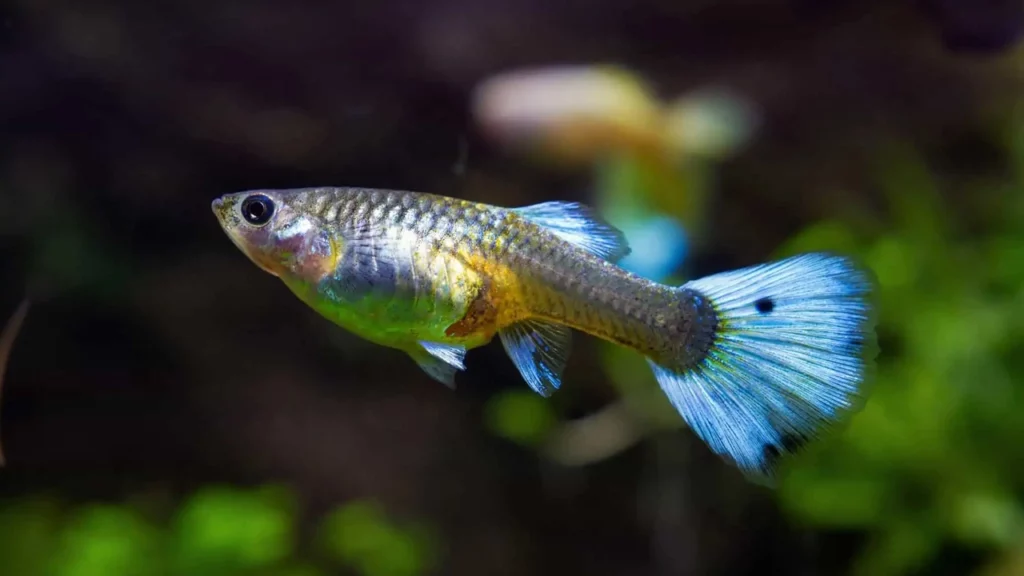
Recommendations for Home Aquariums
While guppies hail from the vibrant tropics, our home environments can be a tad different. But fear not! With the right knowledge, we can create a comfortable haven for our finned companions.
Suggested temperature range for captive guppies:
- Ideal Range: Drawing from their natural preferences, the sweet spot for guppies in a home aquarium is generally between 74°F and 78°F (23°C – 26°C). Within this range, guppies display optimum energy levels, feeding behaviors, and breeding tendencies.
- Slight Flexibility: Thanks to their adaptability, guppies can tolerate a slightly broader range of temperatures. However, while they can live between 72°F and 82°F (22°C – 28°C), it’s always advisable to keep them within the narrower, more ideal range for optimal health and vitality.
- Consistency is Key: While guppies have some resilience to temperature fluctuations in the wild, our domestic buddies thrive best in stable environments. Large or sudden temperature swings in an aquarium can stress guppies out, potentially leading to weakened immunity and other health issues. So, aim for consistency!
- A Note on Breeding: If you’re keen on breeding your guppies, leaning towards the warmer end of the spectrum (around 78°F or 26°C) can encourage mating behaviors. Just remember to ensure the other water parameters are in check to provide a healthy environment for the fry.
Natural Habitat Temperature
Guppies, with their myriad colors and dynamic energy, hail from the freshwaters of Northeast South America, primarily in countries like Trinidad and Tobago, Venezuela, and Brazil. The waters here tell a story, one that guppies have been a part of for eons.
Insights into the guppy’s natural habitat and typical temperatures:
- Tropical Freshwaters: These dainty swimmers bask in the waters of slow-moving streams, ponds, and pools. Think of it as nature’s version of a lazy river, where the tropical climate ensures relatively stable and warm water temperatures.
- Temperature Range: In their natural habitat, guppies typically experience temperatures ranging from 72°F to 82°F (22°C – 28°C). This range is a testament to their adaptability and resilience, allowing them to thrive in various water conditions.
- Natural Temperature Fluctuations: Unlike our controlled home aquariums, nature isn’t always predictable. Rainfall, seasonal changes, and other environmental factors mean guppies in the wild experience minor temperature fluctuations. These periodic changes have, over time, imbued them with a certain level of tolerance.
- Microhabitats: Within these waters, different spots may offer unique temperature niches. For instance, shallow waters warmed by the sun might be hotter, while shaded, deeper pockets might be cooler. Guppies, being the smart little beings they are, often find and choose these microhabitats based on their immediate needs.
Adjusting Water Temperature: Best Practices
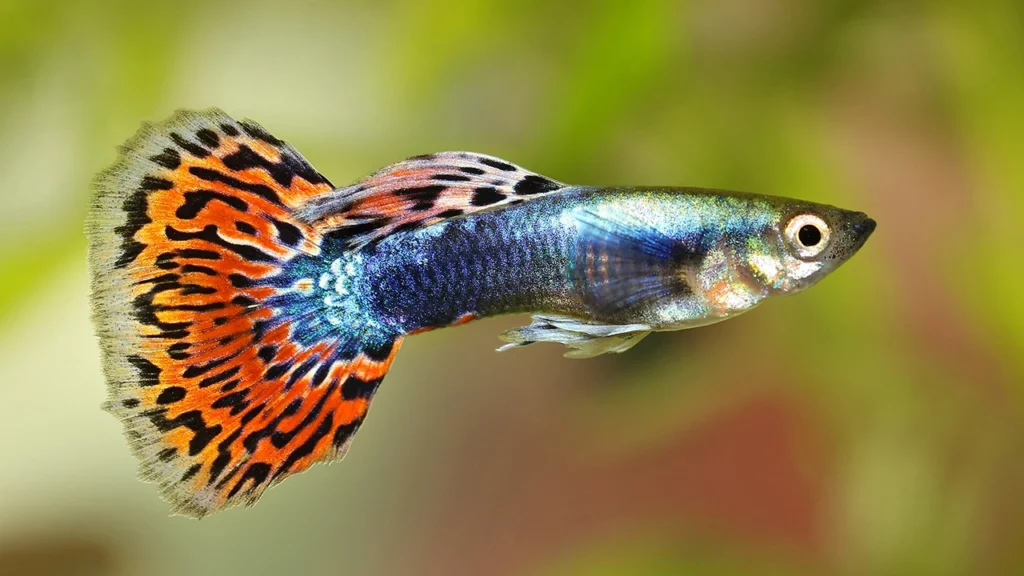
Choosing an Appropriate Heater
Navigating the world of aquarium heaters can be a tad overwhelming, with a variety of choices out there. But, fear not! With a few guidelines, you can choose the perfect heater for your guppy kingdom.
Considerations for selecting a suitable aquarium heater:
- Type of Heater: There are various heaters, like submersible, immersible, inline, and substrate heaters. For most guppy keepers, submersible heaters are a popular choice because of their efficiency and consistent heat distribution.
- Wattage and Aquarium Size: As a rule of thumb, you’d need approximately 3-5 watts per gallon of water. So, for a 10-gallon tank, a heater between 30 to 50 watts should suffice. Always refer to the manufacturer’s guidelines to ensure compatibility.
- Thermostat Integration: Always opt for a heater with an integrated thermostat. This allows you to set your desired temperature, and the heater will cycle on and off to maintain it. Peace of mind guaranteed!
- Safety Features: Look for heaters with safety shut-offs, which turn the device off if the water level drops too low or if it overheats. This can be a lifesaver, preventing overheating and potential harm to your guppies.
- Durability and Reliability: Read reviews and lean towards trusted brands. While it might be tempting to save a few dollars on a cheaper model, remember that a malfunctioning heater can jeopardize your guppies’ well-being.
- Visibility and Settings: Opt for heaters with clear temperature settings and indicators. Being able to easily see and adjust the temperature will save you a lot of guesswork.
- Placement: Position the heater in an area with good water flow, like near the filter outlet. This ensures even heat distribution throughout the tank.
Importance of Regular Monitoring
Every seasoned aquarist will tell you: the best tool in your kit isn’t a device, but the art of observation. In the context of temperature, this is truer than ever.
The role of aquarium thermometers and consistent checks:
- Choosing a Reliable Thermometer: While there’s a variety out there, from stick-on to digital probes, I’d recommend a good quality digital thermometer. They’re precise, easy to read, and can be placed in multiple locations for an accurate reading across the tank.
- Daily Checks: Incorporate a quick temperature glance into your daily routine. Just like you might check the weather before heading out, peep at your aquarium thermometer each day. This ensures you catch any inconsistencies early on.
- Post-Adjustment Monitoring: If you’ve just set up a new heater or made adjustments to the temperature, check more frequently for the next 24 hours. This helps you ensure everything’s stable and functioning correctly.
- Noting Natural Variations: Keep in mind that it’s natural for aquarium temperatures to vary slightly throughout the day, especially if the tank is located near a window or another heat source. However, regular monitoring will help you understand these patterns and differentiate between natural fluctuations and potential issues.
- Red Flags: Rapid temperature swings, a heater that’s always on or always off, or consistent deviations from the set temperature are red flags. Observing these early on can allow for swift intervention, safeguarding the well-being of your guppies.
- Log and Track: Maintain a simple log, jotting down temperatures at different times. Over time, this provides valuable data, giving insights into the tank’s temperature trends and helping identify any anomalies.
Methods for Safe Temperature Adjustment
The dance of temperature modulation is a delicate one. Sharp or hasty changes can leave our finned friends in distress, so it’s essential to approach this task with care and mindfulness.
Avoiding sudden temperature changes and the right way to alter temperatures:
- Gradual Shifts: Should you need to adjust the temperature, do so gradually. Aim for no more than 1-2°F (0.5-1°C) per day. This slow transition gives your guppies the time to acclimatize without undue stress.
- Water Changes: When performing water changes, ensure that the new water is as close in temperature to the tank water as possible. Sudden influxes of colder or hotter water can shock your guppies, leading to potential health issues.
- Using a Heater: For raising temperatures, rely on your trusted aquarium heater. Adjust the thermostat incrementally and monitor as you go. Remember, patience is key!
- Cooling Down: If you need to lower the temperature, there are a few methods. One is to turn off the heater and let the tank cool naturally. Another method, for more rapid cooling, is to float ice packs or frozen water bottles in the tank. But do keep a watchful eye! It’s easy to overdo it.
- Introducing New Fish: When adding new guppies to your tank, ensure that the bag water is temperature-acclimated to the tank. Floating the sealed bag in the aquarium for about 20-30 minutes usually does the trick.
- Avoid Direct Sunlight: Position your aquarium away from direct sunlight to prevent rapid temperature increases, which can be detrimental to your guppies’ health.
- Invest in a Chiller: For those in hotter climates or rooms that experience higher temperatures, investing in an aquarium chiller can be beneficial. It works similarly to a heater but cools the water down instead.
- Environmental Considerations: Sometimes, it’s not just about adding or removing heat but considering the room environment. Using fans, air conditioning, or even adjusting room blinds can have an indirect yet notable impact on aquarium temperature.
Give Us Feedback
Please help us get better by making suggestions or giving feedback, we really do listen to it!
